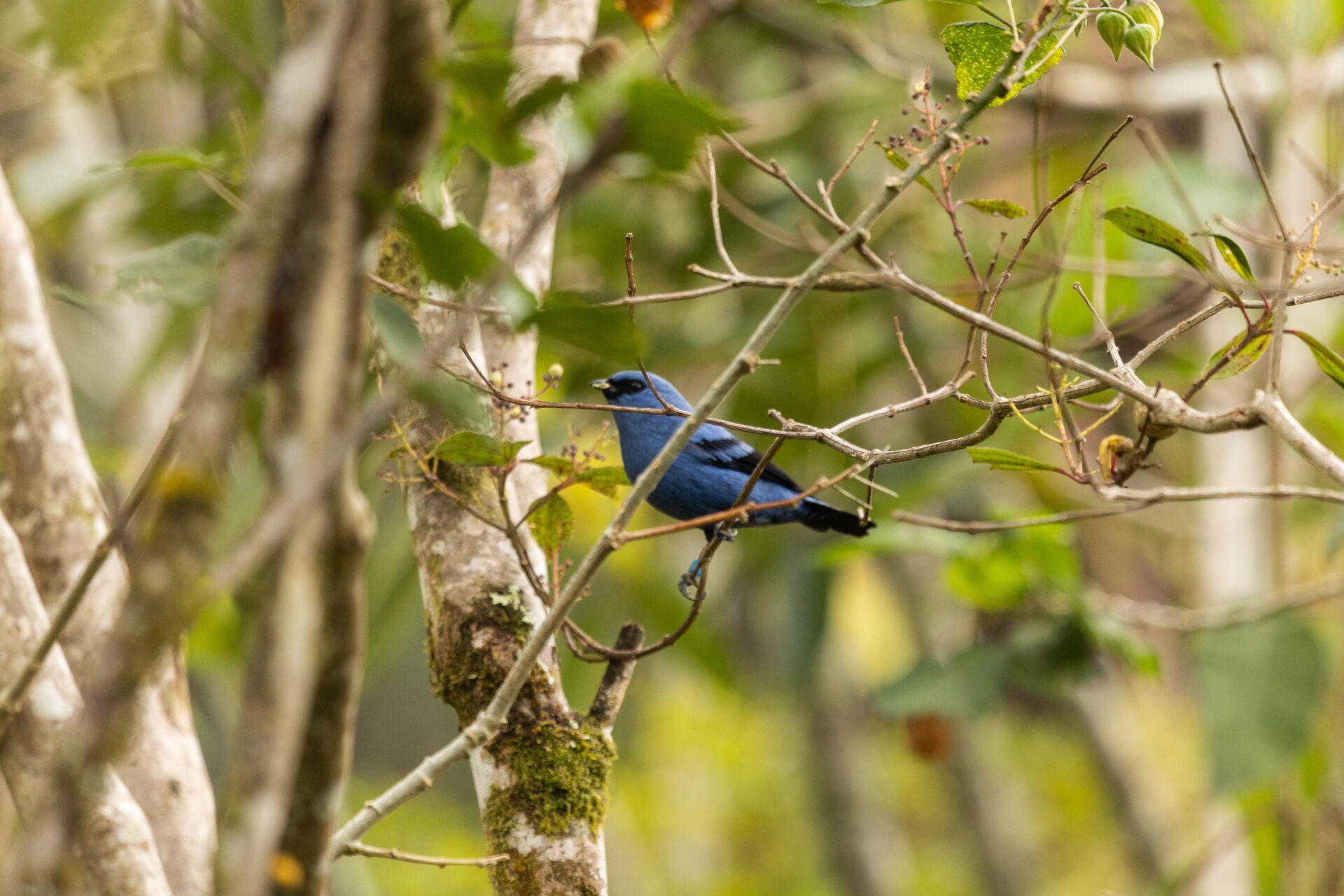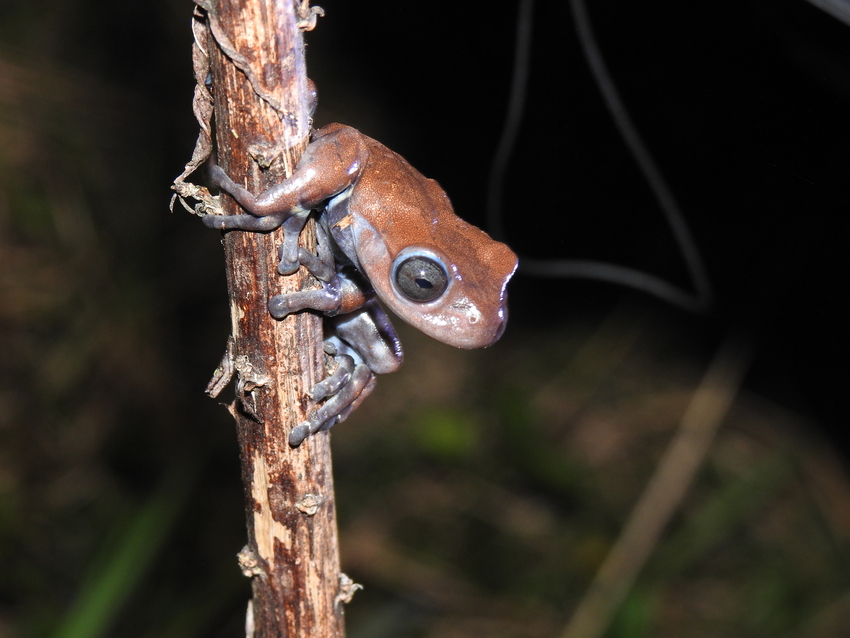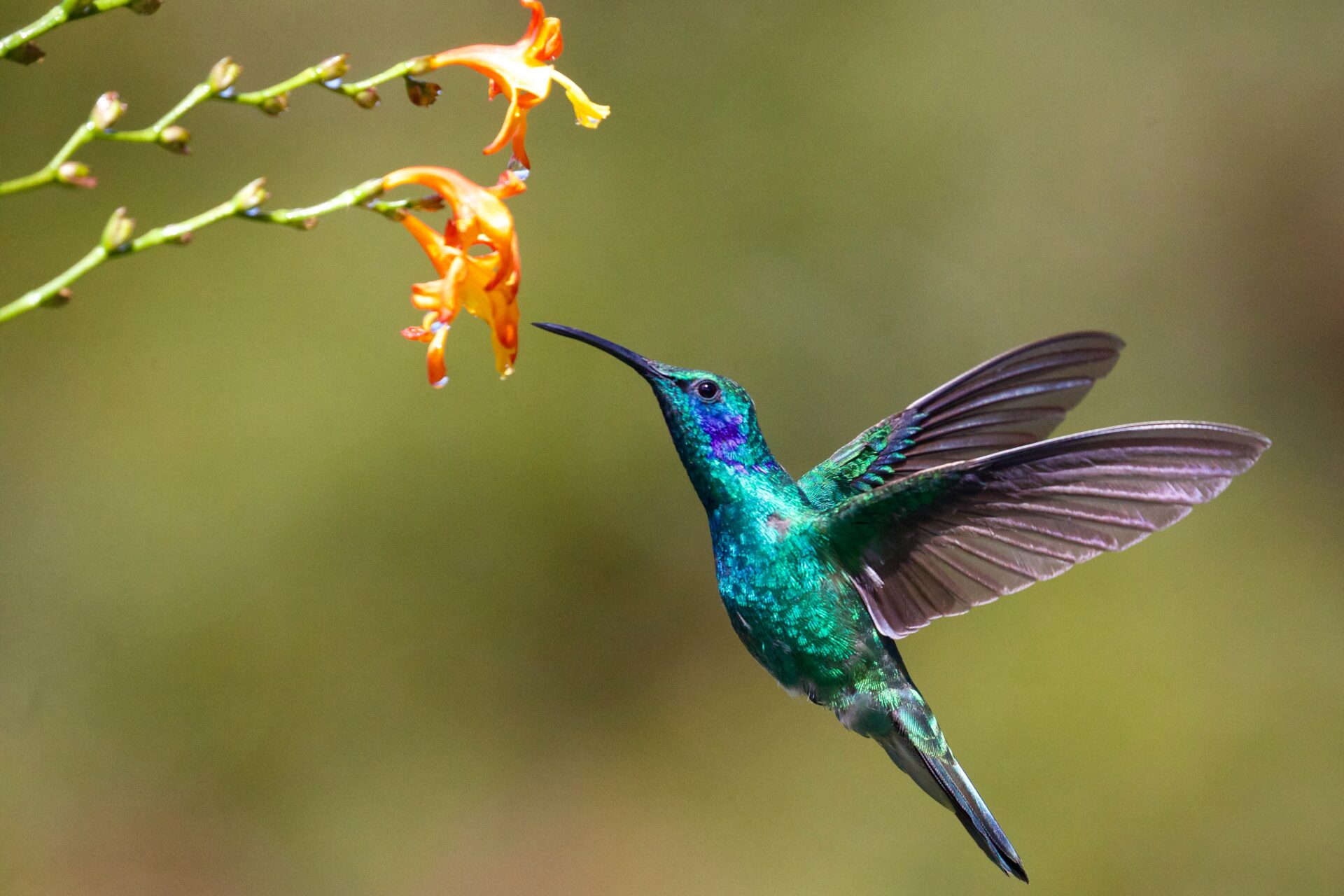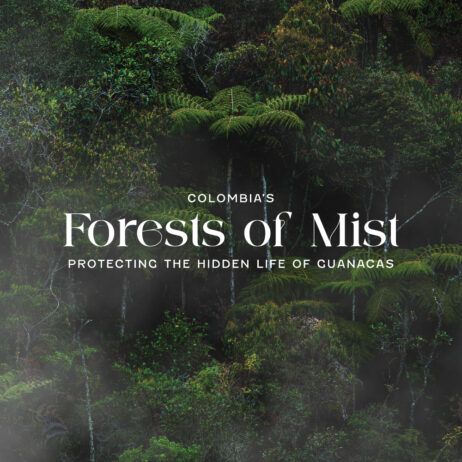
Cloud forests are a refuge for wildcats like this Ocelot, safe from hunting and human conflict. Credit: Paul Bamford.
The forest at first seems quiet, the ever-present mist enveloping the trees in a veil of damp stillness. The dense cloud forest of the Guanacas reserve, 850 ha of protected land in Antioquia’s Magdalena Valley in northwest Colombia, hides an abundance of life with over 665 animal species, from wildcats to hummingbirds.
A continuous flow of energy
At 2,700 meters above sea level, through the stunted trees dripping with lichens and mosses, wildcats prowl on silent paws. The Guanacas reserve is recognised as a haven for releasing rehabilitated Oncillas (Leopardus tigrinus), Ocelots (Leopardus pardalis), and Pumas (Puma concolor), rescued from less stable areas. Pumas are the apex predators of these cloud forests. But, they are not true big cats; instead of the echoing roars so characteristic of their larger cousins, pumas growl when threatened, and when pleased, purr as happily as any housecat. The predators that rest at the top of the food chain are keystone species for the health of the entire ecosystem because they only thrive with an abundance of territory and prey. Their impact, in turn, cascades through the forest- plants avoid overgrazing, scavengers can feast on leftovers, and prey species accelerate natural selection.

Pumas are a keystone species for measuring the health of the cloud forest ecosystem. Credit FUNDAECO
These complex interactions are present all around the forest. In the streams, carp feed on the aquatic larva of insect-hunting dragonflies. Without even meaning to, they create mutualistic relationships on land with plants pollinated by insects that would have otherwise been preyed upon by the dragonflies. Digging mammals act as ecological engineers, foraging in the undergrowth for fallen berries and tiny prey. By churning the soil as they dig, it is permeated with water and nutrients to then be soaked up by roots. Small mammals, like the Olinguito (Bassaricyon neblina), a relative of racoons, gorge on fruits and disperse the seeds far and wide from their parent trees. All the forest inhabitants are connected in an intricate web, working collectively to maintain dynamic balance. Life evolved over millennia
Life evolved over millennia
Away from the ground, tropical montane birds provide a soundscape to the forest. As dusk and dawn arrive each day, the heavy dew in the air carries chattering bird calls far off through the trees. The Guanacas reserve is home to 133 bird species, many of which are singularly adapted to the isolated environment of the high mountain forests. Over time, as they migrated further and further up the mountain slopes, they adapted to the changes in water, nutrients, and temperature. Species such as the elusive Antioquia Brushfinch (Atlapetes blancae) prefer the shrubby edges of the forest, whilst others like the Black-and-gold Tanager (Bangsia melanochlamys) manoeuvre nimbly through the tangled understory of the canopy with short, rounded wings. Adaptations such as these allow birds to thrive within their unique habitat, however, they also prevent movement between fragmented patches if their home is damaged. If vegetation is removed, or insect prey is killed by pesticides, highly specialised, rare species cannot quickly adapt to other options, leaving them vulnerable to extinction.

Species such as this Blue-and-black Tanager are specially adapted to fly through the dense trees of the cloud forest. Credit: Andrea Ferreira
From streambeds to treetops
On the forest floor, mountain springs rush cold, fresh water into interlacing streams, said to be the clearest and purest in the region. On the banks, schools of tadpoles metamorphose into solitary tree-dwelling frogs, among which is the Antioquia Chocolate Frog (Hyloscirtus antioquia). At night, their calls break through the pitch darkness, the dark brown skin for which they are named camouflaging against tree trunks. The frogs are named not only for their colour, but for the pungent smell emitted from their skin when disturbed, reminiscent of very bitter coffee or cocoa. First seen by scientists in 2010, the shy Chocolate Frog was only observed closely enough to be described as its own species almost three years later. Distinguished by its grey irises and orange stripes, this acorn-sized amphibian may be just one of many new species waiting to be found in the Guanacas reserve.

The elusive Antioquia Chocolate Frog makes its home in the forest streams patterning the floor of the Guanacas reserve. Credit: Juan Carlos Macías
A symbol of hope and resilience
Some exceptions to the typical characteristics seen in cloud forest birds are the 38 species of Hummingbird found here. With some of the smallest of Colombia’s bird species in their family, their eggs are often no larger than a pea, their nests can fit into a teaspoon, and they can produce over 12,000 miniscule heartbeats per minute. Their long, narrow wings flit more than 60 times per second and their short, delicate legs don’t walk or jump but cling to nests, cliffs and trees. Though not endemic to the region, Hummingbirds have a special place in the cloud forest and in the stories passed down by the local people. Each bird pollinates up to 2,000 flowers each day, drawing nectar from flowers with long, straw-like tongues.

The Guanacas reserve cloud forest is home to 38 species of Hummingbird, a traditional symbol of hope for the future. Credit: James Wainscoat
But it is their vibrant wings, rapidly beating in a figure of eight- the symbol of infinity- that paint them as spiritual creatures. With their ability to hover and move in all directions, hummingbirds symbolise the past, present and future – which is why our partner Fundación Guanacas Bosques de Niebla, feature them in their logo. The past can teach us what has been lost, and how we can act today to protect these magnificent ecosystems for generations to come.
By supporting our Colombia’s Forests of Mist appeal, you can help to safeguard this mystical landscape and all the life within it.
